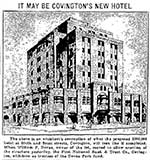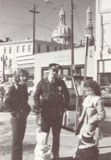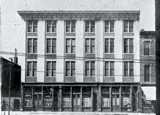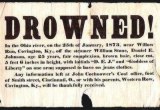
 |
 |
Covington, c. 1830's |
1838 Map of |
 |
“The market and square, Covington, from a point of view on Greenup Street. It has a lively and bustling appearance.” |
![]()
| “Since the selling and weighing of cattle on Sunday is prohibited in Cincinnati, many of the butchers of that city come over to Covington on that day and do a pretty lively business. Last Sunday trade at the Covington stock yards was brisker than on any other day of the week.” Courier-Journal, February 1, 1872 |
![]()
July 14, 1918. Fear and paranoia masquerading as patriotism created rampant Anti-German hysteria in Northern Kentucky. The sign says: One County - One [illeg] - One Language Beginning August First, 1918, the C.P.L. [Citizens Patriotic League] [illeg] With These Suggestions |
| For a fuller look at anti-German hysteria in Northern Kentucky, we recommend Lisa Gilham's report (pdf) |
New Hotel at 6th and Scott?
(always take going-to-be stories with a skeptical eye)
 |
 |
 |
| Hatchet Lake From a Facebook post by Fred Hill |
...from an aerial view | ...from a map. Note a number of lakes. |
| Hatchet Lake was reached by going up Edgecliff Road. I-75 took it out. | ||
Covington Scene, c. 1977
looking northwest on West 7th
Thanks to Mildred Rains for identifying the policeman as Jim Trenkamp; the other folks are his neighbors, the Thompsons.
![]()
An 1856 description of Covington
For whatever reason, the Kentucky General Assembly found it necessary to pass An Act, legislation, to make it a felony to specifically assault people driving livestock in Covington. |
A view of manufacturing in Covington and Newport, in 1839.
![]()
The White House

| The White House was the scene of much political and legal wrangling in 1908-1912. Reputedly, it was a pool hall with horse race gambling and roulette wheels. The authorities sent to investigate were frequently unable to substantiate those rumors. John Craig promised as mayor he would clean it up. His adventure, here. |
Union Light Heat & Power Co. Offices, 1956
640 Scott Street
 |
 |
| Temple of Israel, Seventh Street, c. 1915, torn down to make room for the Post Office at 7th and Scott. |
Temple of Israel, Scott Street |
![]()
“Col. J. W. Leathers and George A. Tallis, of Covington, Kentucky, are having a newspaper controversy. The last broadside is from Leathers, who winds up with the following elegant style: 'I suppose this publication will dispense with the necessity of any further notice from me of this miserable flax-headed, goat-jawed, noisy, swill-fed, drunken squatter sovereignty, lowlife scamp, G. A. Talis, and his accomplice for whom I have the most ineffable contempt.'” Evansville (Ind) Daily Journal, January 5, 1859, and certainly reprinting the item from a Covington or Cincinnati paper. |
![]()
 |
 |
 |
| City Market House, Covington, KY, 1909. Now gone, the Market House was on the West side of Madison, at 7th |
Baker-Hunt, c. 1930 They're on the web, here. |
Boy Scouts at Dedication of Daniel Beard Historical Marker, 1950. They are standing on the lawn of the old post office at 3rd & Court Streets. |

Your handy guide to where to find a public phone in 1889 in Covington.
Represented to us as Covington, Kentucky
 |
 |
 |
| Covington Industrial Club. nw corner of Eighth & Madison |
Covington Industrial Club and Richard Ernst. A brief biography of Ernst is here |
Covington Industrial Club, 1922 |
Central Covington plans to be its own city in 1880.
| The L & N Employee Magazine had these three features about Covington. All pdf's. | |||
| Civic Covington, 1926 | Covington in Retrospect, 1926 | Covington Industry, 1926 | |
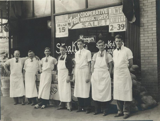 |
 |
|
| A Kroger in Covington in the 1930's, with possible locations. from a Facebook post by Mary Pat Kloenne, who notes her Dad is 3rd from the right |
||
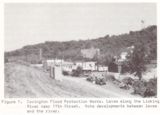 |
 |
| Flood Wall at 17th Street | Upland area above Covington, 1930 |
The Greatest Mother in the World,
from the Kenton County Red Cross Chapter Canteen
“to Marten Petterson, Lowell Mich, October 18, 1918,
Der Frand, I that I wood tell you that I am well and hope you
are the sane. Rite as soon as you can I have not had no male yet.
So, good by. Priviet Spenor Johnson,
Co. C Peciruit Training Camp, Mulbery Island, Camp Eustus, Va”
1873
![]()
In 1835, Cyrus P. Bradley's Journal had descriptions of Covington's:
| Ironworks | Ferries | Hogs | Steamboats |
![]()
In 1904, they found an 1834 Directory of Covington. Details here.
An article cites some 1836 Covington businesses.
It's 1847, and Covington building is happening on an “extensive scale.”
Margaret Strebel Hartman has written on the early history of Covington (pdf).
H. H. Martin talks about coming to Covington. In 1818.
Miss Mary Laidley reviews papers from Covington in the early 1800's, and reports.
Mrs. Udry's History of Covington.
![]()
 |
The above picture is from the City of Covington's Strategic Plan from 1930 (covering Latonia, too). They published this picture as a good example of how people should use their plantings. |
| Various descriptions and overviews of Covington from: | |||
| 1814. | 1818. | 1861. | 1888 |
This “Typical Country Road” is from a Covington publication from 1912.
Thanks to Lisa Conley for helping us with the location: Latonia at Latonia Avenue and the 3L.
Covington residents don't care much for paroled rebels after the Civil War.
| Collin's Historical Sketches of Kentucky mentions a Catfish taken on a Covington trot line in July of 1816 which was 5 and a half feet long, 4 feet in girth, 12 inches between the eyes and weighed 117 pounds. It was so powerful that the fishermen needed to shoot it before getting to shore. | The Covington Rangers enlist for the Mexican-American War in 1846, here. |
| “Covington, Ky., Monday, July 12. A fire broke out in this city on Saturday night, which destroyed ten or twelve buildings. The loss is estimated at $35,000, only a small portion of which is covered by insurance.” from the New York Times, July 14, 1852 |
A cowardly murder in Covington? Here. |
| Another bad fire in Covington was in 1893, and it took out most of the block between Fourth and Fifth West of Madison. You can read about that one here. | Shopping in Covington: Yesterday and Today, by David E. Schroeder, at this site. |
The last two hangings in Kenton County, both legal, were of rapist Harold Van Venison and Pete Montjoy. You can read more about Van Venison here, (pdf) and Montjoy here. (pdf) There is an argument to be made that Montjoy was innocent, and you can read that at this site. |
The lynching of Covington's Phil Watson, here. |
| “We have received the first number of the Saturday Advertiser, a new eight-page weekly, published in Covington.” Courier-Journal, May 6, 1873 | Legal hanging draws 4,000 on Willow Creek |
| “The citizens of Covington are requested to send all the refreshments - such as coffee and substantial edibles - that they can to the Eleventh-street Market-house, by ten o'clock this morning, for the purpose of furnishing a repast to the Union troops that will pass through the city at that time. By order of the committee.” Cincinnati Daily Enquirer, October 3, 1861 | General Winfield Scott (Wikipedia) visits Covington in 1852, story here. |
| Central Covington is listed on the National Register of Historic Places. The designation has had it's boundaries enlarged in 1991, 1995, and 2001. | |
| “A drove of cattle and the usual collection of autos street cars and trucks found on a busy city street competed Monday for the use of Madison-av. Covington, at 16th-st. The cattle, being driven to the Rice slaughter house, Patton-st. and Eastern-av., stampeded at 16th-st, and blocked both north and south bound traffic for some time. Finally, after some shouting and clubbing, the drives succeeded in rounding up the cattle and getting them started in the right direction.” From the Kentucky Post, September 18, 1928 | In 1876, the Covington newspaper, The Ticket, decided to run a “Covington 30 Years Ago” column. Read it here. |
| “A gentleman in Covington, Kentucky invited Mr. Jolliffe and lady, of Cincinnati, to dine with him last Saturday. Mrs. Jolliffe went over in the morning and Mr. Jolliffe about one o’clock. As he passed up the street, he was assailed by a Mr. Gaines, whose negro killed her child a year ago in Cincinnati, rather than be returned to slavery. The assault was in true Kentucky style – the kind that saves the Union. A few more such acts of courage will give the American people a proper idea of the institution of slavery.” Indiana American (Brookville), June 5, 1857. Jolliffe was the attorney who represented Margaret Garner (Wikipedia) and fought Gaines’ attempts to return her to slavery. | Jury rules for no African-Americans in pool rooms in Covington. |
| A land-owner posts his no-baseball sign. | |
| "Covington is getting to be a regular Mecca for Chicken fighters. Fights between game birds in Cincinnati, Covington, and Newport have been so successfully brought off within the past few weeks that it is proposed to have these fights regularly twice a week during the winter. A fighting pit has been erected in Amsterdam, a suburb of Covington, capable of seating several hundred spectators. An admission fee of $1 is to be charged. The managers of the affair are well known sporting men of Cincinnati." the Kentucky Post, December 6, 1898 | Heard of the Covington, Flemingsburg, & Pound Gap Railway? Here. |
Covington was officially established as a city on February 8, 1815 by this act of the Kentucky Legislature. |
|
| “Footpads [criminals who robs pedestrians] are again infesting the roads leading into Covington. Many of the tramps who have lived on the bounty of farmers during the summer, or upon the proceeds of petty depredations in the county now, as the approach of inclement weather, where they need something warmer than a couch of leaves with the blue sky for a covering, resort to more desperate means to supply themselves with comforts at the expense of others. Farmers coming into the city with produce should either return home before nightfall, or leave their money in the bank, or be prepared with effective means of defense against highwaymen.” Courier-Journal, November 12, 1875, reprinting an item from the Covington-Journal | “A large demonstration occurred in Covington, Kentucky, yesterday to protest against the invasion of the Papal dominion by King Victor Emmanuel. Fully five thousand persons were in the procession, with eight bands of music.” Indianapolis News, December 19, 1870 |
| The Kentucky Department of Labor counted how many men, women and children worked in many - not all - businesses in Covington in 1916-1917. Results are here. | Description of Covington from an 1827 guidebook. |
| “The Kentucky Garland is the title of a very neat and entertaining paper, published at Covington, Ky., by Mrs. H. C. Lindsay, a widow with eight children. The price is only one dollar a year. The paper is worth double the money, and is well worthy the patronage of the public, independent of Mrs. L's other claims. Her husband, the late H. R. Lindsay, of the Mount Stating "Whig," was a member of the society of Free Masons and Odd Fellows. Will not the brethren of those societies do something fox the widow of a brother?” Godey's Lady's Book, October, 1853 | Covington's Commercial Tribune published Laurie Blakely's History of Covington over several weeks, beginning August 23, 1914, here. (large pdf). |
| “Fire. On Tuesday evening, March 8th, about 11 o'clock, a fire broke out in Covington, Ky., opposite Cincinnati, which did considerable damage. It originated in the boarding rooms of Mrs. Ballous. These rooms, with the ware house below, a grocery, tailor shop, and carpenter shop, were destroyed. Very little saved, and nothing insured. The buildings were owned by Mr. McClure, of Newport, Ky.” Crawfordsville [Indiana] Gazette, April 2, 1836, reprinting from the Cincinnati Gazette. | Covington celebrates the American Centennial, July 4, 1876. |
| "The City of Covington was thrown into a state of excitement yesterday, created by the arrest of a negro, the slave of John Kennedy, on Greenup street, who was charged with committing a violence upon the person of a young German woman. He was examined before one of the magistrates of the city, convicted and sentenced to receive sixty-nine lashes on his back. He was immediately taken by one of the constables into the city jail, and after being stripped and tied to the whipping post, the execution of the sentence was carried into effect. It has only been a few months since this same negro received fifty lashes for similar outrage upon the person of an Irish girl. The whipping he received yesterday caused him to squirm and yell most dreadfully, while the blood flew at every blow he received from the whip." Cincinnati Gazette, June 17, 1854 | Dr. Paul Tenkotte writes about Kenton's historical handling of poverty at this site. |
| The Census Bureau releases some “very startling facts” about Covington, 1902. | |

The Daily Commonwealth, March 27, 1883
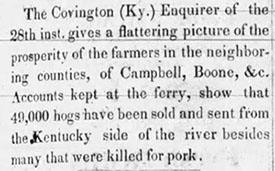
Kentucky Gazette, January 4 ,1834
 |
 |
 |
 |
| A walking tour of Covington, from 1976 | |||
 |
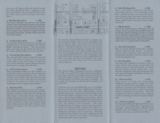 |
| A walking Tour of Seminary Square, 1991 | |
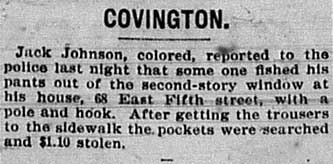
Commercial Tribune, August 5, 1902
![]()



